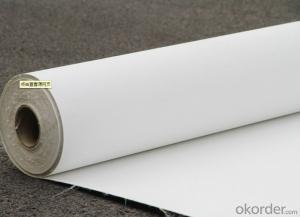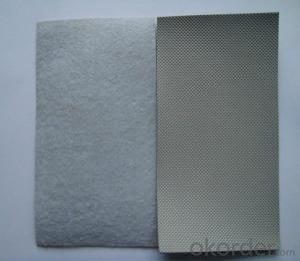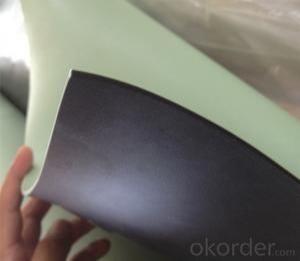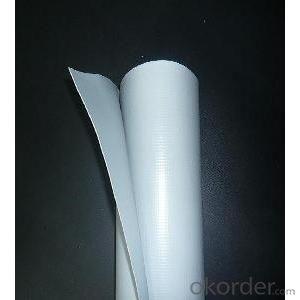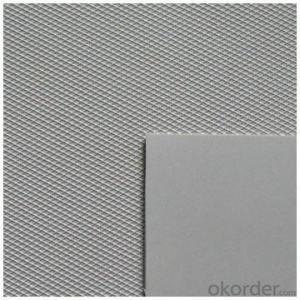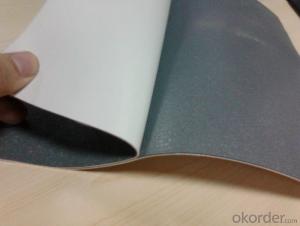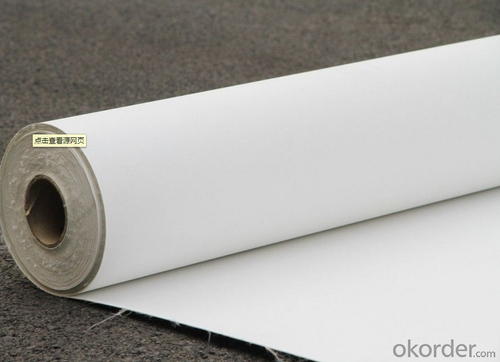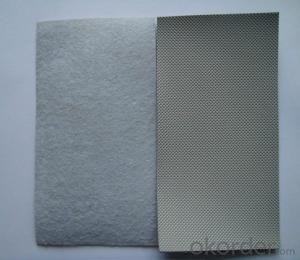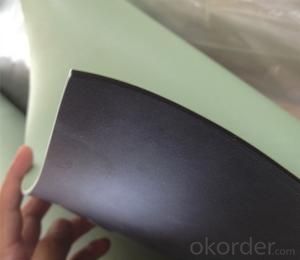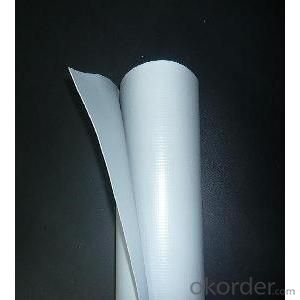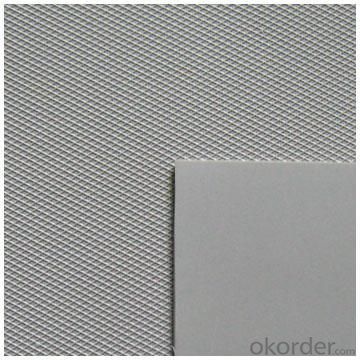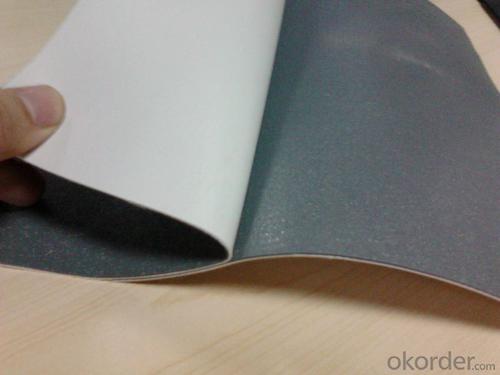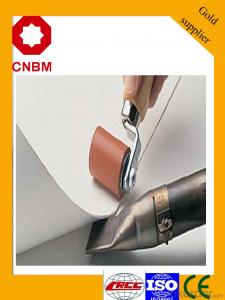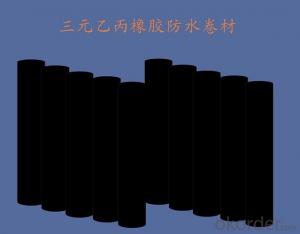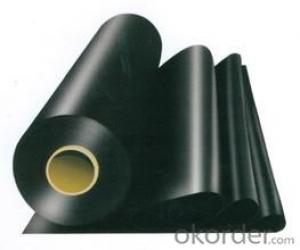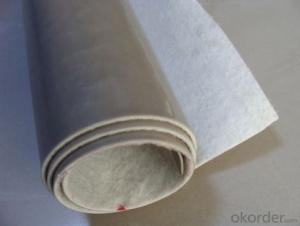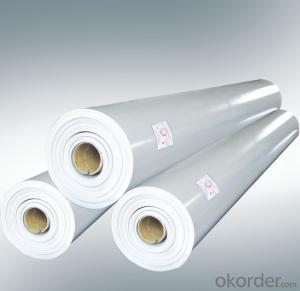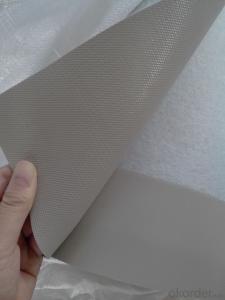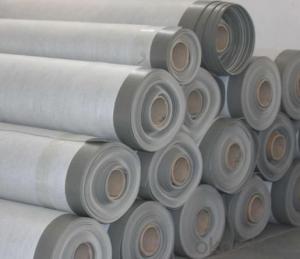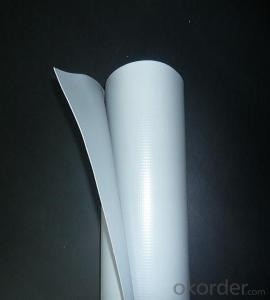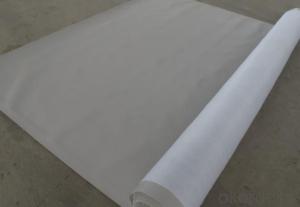PVC Waterproofing Membrane Reinforced Polyvinyl Chloride
- Loading Port:
- Shanghai
- Payment Terms:
- TT OR LC
- Min Order Qty:
- 20000 m²
- Supply Capability:
- 5000000 m²/month
OKorder Service Pledge
OKorder Financial Service
You Might Also Like
PVC Waterproofing Membrane Reinforced Polyvinyl Chloride
Product Description of PVC Waterproofing Membrane Reinforced Polyvinyl Chloride:
PVC waterproofing membrane is an excellent high-quality polymer waterproof sheet, made of PVC resin by adding plasticizer, anti-UV agent, anti aging agent, and stabilizer and other processing aids through extrusion and molding. As the highly recommended product by the Ministry of Construction, it is featured by high tensile strength, great elongation, good stability, small shrinkage, low-temperature performances, good resistance to weathering and root
penetration, and long service life.
Features of PVC Waterproofing Membrane Reinforced Polyvinyl Chloride:
1.Long service life and weathering resistance; and the materials can be used for 30 years on the roof and 50 years underground.
2. High tensile strength, great elongation, and small size change during heat treatment.
3. Good low temperature flexibility and adaptability to environmental temperature changes.
4. Good resistance to root penetration. It can be made for green roofs.
5. Excellent resistance to puncture and impact.
6. Convenient for construction (can be welded), solid and reliable, and Eco-friendly.
7. Strong resistance to chemical corrosion, suitable for special occasions.
8. Good plasticity, convenient and quick corner detail treatment. Easy maintenance and low cost.
9.After 2,000 hours of manual weathering verification
Classification of PVC Waterproofing Membrane Reinforced Polyvinyl Chloride:
1. N: Homogeneous PVC membrane
2. L: PVC membrane with fabric backing
3. W: Reinforced PVC membrane
Advantage of PVC Waterproofing Membrane Reinforced Polyvinyl Chloride:
1.) Mixing automation. Apply automatic temperature control automatic time control and automatic feed control.
2.) Extrusion equipment uses twin screw coextrusion. Screw temperature uses computer automatic temperature control system.
3.) Handpiece uses large width didhead extrusion equipment.
4.) Sophisticated three-roller calender equipment. The space between equiment is controlled by automation system.
Technical Data of PVC Waterproofing Membrane Reinforced Polyvinyl Chloride:
No. | Item | Model Ⅱ | |
1 | Tensile Strength Mpa ≥ | 12.0 | |
2 | Elongation at break% ≥ | 250 | |
3 | Shrinkage rate % ≤ | 2.0 | |
4 | Flexibility at low temperature | No crackle at -25oC | |
5 | Water tightness | Watertight | |
6 | Puncture resistance | Watertight | |
7 | Heat aging treatment | Appearance | Free from bubble, crack, cohesion and void |
Change rate of tensile strength % | +20oC | ||
Change rate of elongation at break | |||
Flexibility at low temperature | No crack at -20oC | ||
8 | Chemical corrosion resistance | Change rate of tensile strength % | +20 |
Change rate of elongation at break | |||
Flexibility at low temperature | No crack at -20oC | ||
9 | Artificial weathering | Change rate of tensile strength % | +20 |
Change rate of elongation at break | |||
Flexibility at low temperature | No crack at -20oC | ||
Application of PVC Waterproofing Membrane Reinforced Polyvinyl Chloride:
1) All kinds of roofs, such as steel structure roof, planted roof etc.
2) Underground engineering, such as building basement, subways, tunnels, air raid shelter, etc.
3) Other projects like artificial lake, dam, water reservoir, grain storehouse, etc.
Images of PVC Waterproofing Membrane Reinforced Polyvinyl Chloride:
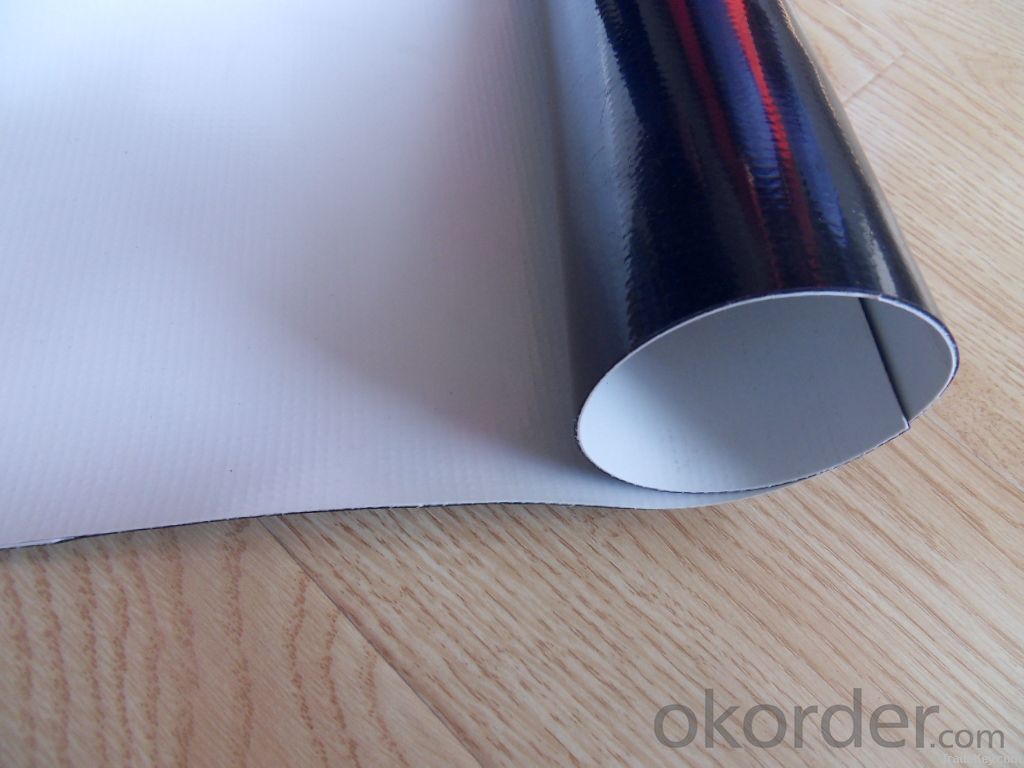
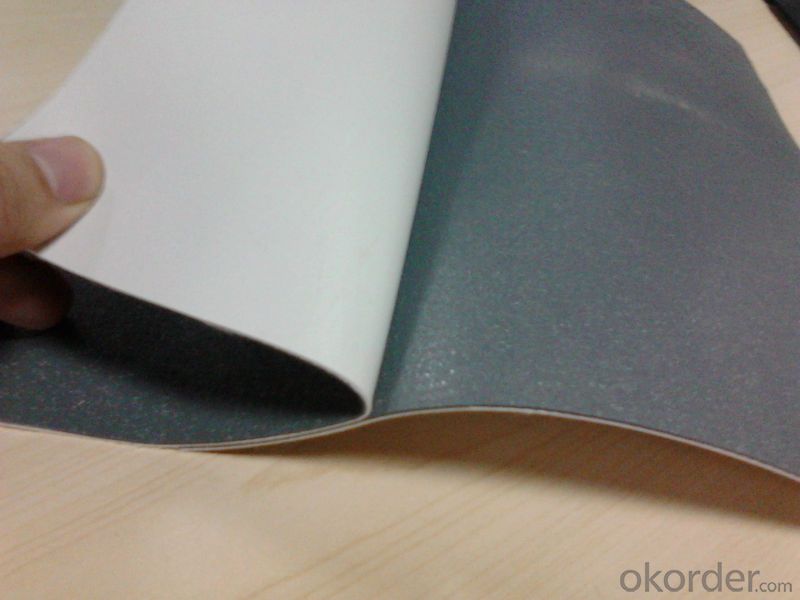
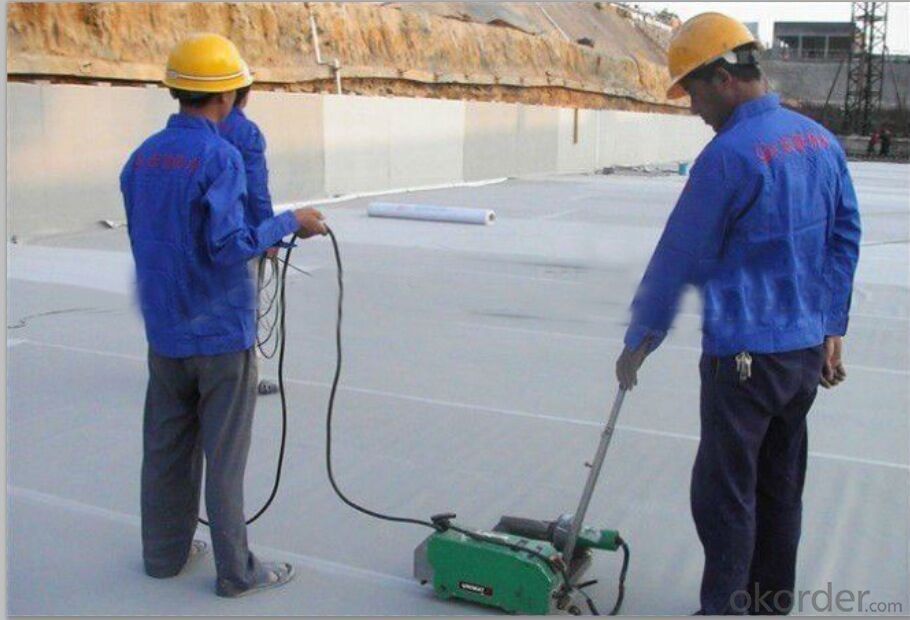
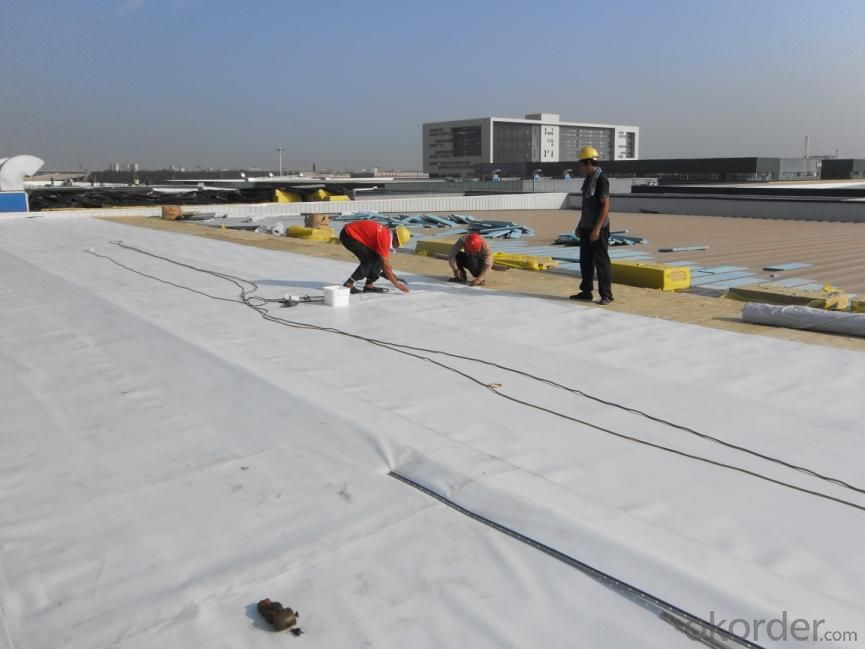
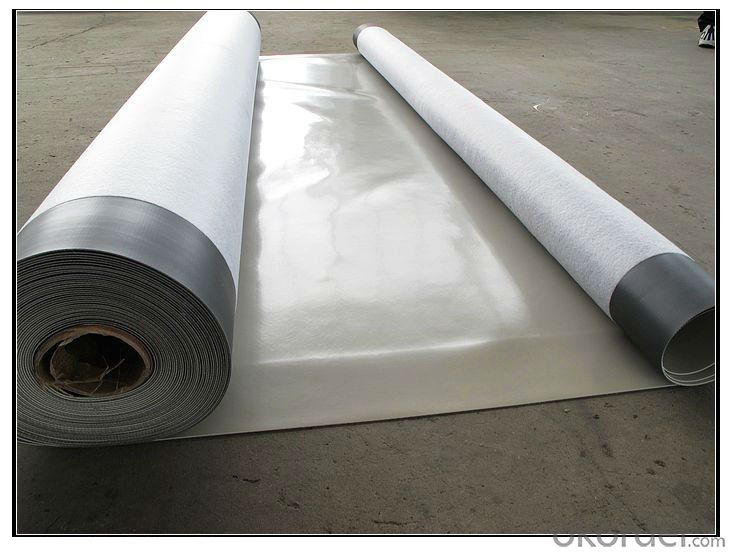
FAQ of PVC Waterproofing Membrane Reinforced Polyvinyl Chloride:
1. Can you produce 4m width?
Yes, no problem for us. We have four bases in China, largest one in this field.
2. How many quantity in one 20'' container for 1.2mm and 1.5mm?
480rolls, 11520m2 for 1.2mm and 400rolls, 9600m2 for 1.5mm
3. Can you provide free samples?
Yes, our samples are free, but express fees usually on buyer's account.
- Q: Can a waterproofing membrane be used in conjunction with tile or stone installations?
- Yes, a waterproofing membrane can definitely be used in conjunction with tile or stone installations. In fact, it is highly recommended to use a waterproofing membrane in wet areas such as bathrooms, showers, and kitchen backsplashes to prevent water damage and moisture penetration. A waterproofing membrane acts as a barrier that prevents water from seeping through the tile or stone and reaching the underlying layers, such as the subfloor or wall. It helps to protect the structure and prolong the lifespan of the installation. There are various types of waterproofing membranes available, including liquid-applied membranes, sheet membranes, and fabric membranes. These membranes can be applied to the substrate before the tile or stone is installed, creating a waterproof layer that ensures the area remains dry and free from water-related issues. Using a waterproofing membrane not only provides protection against water damage but also helps to prevent the growth of mold and mildew, which can be harmful to both the installation and the health of the occupants. It is important to note that the proper installation of the waterproofing membrane is crucial for its effectiveness. It should be applied according to manufacturer guidelines and best practices to ensure a tight seal and complete coverage. Overall, incorporating a waterproofing membrane with tile or stone installations is a wise choice, as it enhances the durability and longevity of the project while providing peace of mind against potential water damage.
- Q: Can a waterproofing membrane be installed over existing coatings or sealants?
- Yes, a waterproofing membrane can be installed over existing coatings or sealants. However, it is important to assess the condition and compatibility of the existing coatings or sealants before installation to ensure proper adhesion and long-term performance of the waterproofing system.
- Q: Are waterproofing membranes resistant to jet fuel?
- No, waterproofing membranes are not typically resistant to jet fuel. Jet fuel is a highly corrosive substance that can degrade certain materials, including waterproofing membranes.
- Q: Can a waterproofing membrane be used on tunnels with soundproofing systems?
- Yes, a waterproofing membrane can be used on tunnels with soundproofing systems. In fact, it is common practice to use waterproofing membranes in conjunction with soundproofing systems in tunnels. This is because tunnels are susceptible to water infiltration, which can cause damage to the structure, as well as compromise the performance of the soundproofing system. By applying a waterproofing membrane, the tunnel can be protected from water intrusion, ensuring the longevity and effectiveness of the soundproofing system. Additionally, the waterproofing membrane can help to maintain a dry and comfortable environment within the tunnel, which is crucial for the efficient functioning of the soundproofing system. Therefore, the combination of a waterproofing membrane and soundproofing system is highly recommended for tunnels to provide both water protection and sound insulation.
- Q: Can a waterproofing membrane be used on storage tanks?
- Indeed, storage tanks can benefit from the application of a waterproofing membrane. These specialized membranes serve as a barrier, preventing the infiltration of water or other liquids into the surface they are applied to. By employing such membranes, storage tanks are shielded from the detrimental effects of leaks, corrosion, and moisture-related damage. Numerous industries, including oil and gas, chemical, and water treatment, rely on waterproofing membranes to uphold the durability and longevity of their storage tanks. Furthermore, these membranes can be customized to meet specific requirements, such as resistance to chemicals, UV exposure, or high temperatures, thus making them well-suited for a diverse array of storage tank applications.
- Q: How does a waterproofing membrane handle construction vibrations?
- To withstand construction vibrations, a waterproofing membrane is created as a durable and flexible barrier. This membrane, typically composed of materials like rubberized asphalt or synthetic polymers, possesses remarkable elasticity and tensile strength. When construction vibrations occur, the waterproofing membrane absorbs and disperses them, safeguarding the building's structural integrity and the waterproofing system. The membrane's flexibility enables it to stretch and contract, accommodating the vibrations without experiencing cracks or tears. Moreover, certain waterproofing membranes include features like reinforced layers or fabric reinforcement, which augment their ability to endure construction vibrations. These reinforcements provide extra strength and stability, rendering the membrane more resistant to damage from vibrations. It is crucial to recognize that the effectiveness of a waterproofing membrane in handling construction vibrations is influenced by the quality of installation. Proper installation methods, encompassing adequate surface preparation and appropriate adhesion techniques, ensure that the membrane is securely affixed to the substrate, thereby minimizing the risk of displacement or damage during construction activities. In conclusion, a waterproofing membrane is specially designed to handle construction vibrations by absorbing and dispersing their impact, while maintaining its integrity and waterproofing capabilities. The membrane's flexibility and strength, combined with proper installation techniques, guarantee its ability to withstand the challenges posed by construction vibrations and provide enduring protection against water intrusion.
- Q: Can a waterproofing membrane be used for loading docks or ramps?
- Yes, a waterproofing membrane can be used for loading docks or ramps. A waterproofing membrane is designed to protect surfaces from water damage by creating a barrier that prevents water from seeping through. Loading docks and ramps are exposed to various weather conditions and can be prone to water infiltration, which can cause damage over time. Applying a waterproofing membrane to these surfaces can help to prevent water penetration, protecting the structure and increasing its lifespan. Additionally, a waterproofing membrane can also provide added benefits such as slip resistance, protecting against chemical spills, and reducing maintenance costs.
- Q: Can a waterproofing membrane be used for a foundation wall?
- A foundation wall can indeed utilize a waterproofing membrane. It is highly advisable to employ such a membrane to shield the foundation against water infiltration and moisture-related harm. Typically, this membrane is applied on the outer side of the foundation wall, serving as a barrier to prevent water from penetrating. Its design entails flexibility, durability, and resistance to hydrostatic pressure, thereby ensuring long-lasting protection for the foundation. Moreover, the membrane aids in preventing water from seeping into the basement or crawl space, thereby decreasing the risk of mold, mildew, and structural problems. Ultimately, employing a waterproofing membrane for a foundation wall is an effective means of safeguarding the building's foundation, guaranteeing its integrity and longevity.
- Q: Roof SBS waterproofing membrane can not empty shop
- Waterproof membrane: waterproofing membrane is mainly used for building walls, roofs, and tunnels, highways, landfills, etc., to resist the external rain, groundwater leakage can be curled into a roll of flexible building materials , As the engineering foundation and the building between the no leakage connection, is the entire project waterproof first barrier, the whole project plays a vital role. The main products are asphalt waterproofing membrane and polymer waterproofing membrane.
- Q: Can a waterproofing membrane improve energy efficiency?
- Indeed, energy efficiency can be enhanced through the utilization of a waterproofing membrane. By functioning as a barricade against the infiltration of moisture, the waterproofing membrane effectively averts water from permeating the building envelope. Consequently, it maintains the structure's dryness, thus inhibiting the growth of mold and mildew. This is pivotal in the preservation of indoor air quality and the safeguarding of building materials from deterioration. Furthermore, a waterproofing membrane can also offer insulation advantages. Numerous waterproofing membranes are engineered with a substantial thermal resistance, commonly referred to as R-value. This signifies that they can furnish an additional layer of insulation to the edifice, diminishing heat transfer across the walls and roof. By enhancing the thermal performance of the building, a waterproofing membrane facilitates the reduction of the burden placed on heating and cooling systems, ultimately leading to energy savings and improved energy efficiency. Moreover, a waterproofing membrane can contribute to the reduction of air leakage within a building. Air leakage is responsible for a noteworthy amount of energy dissipation, as conditioned air escapes through crevices and fissures in the building envelope. By effectively sealing off these areas, the waterproofing membrane aids in enhancing the airtightness of the building, thereby diminishing energy loss and improving energy efficiency. All in all, a waterproofing membrane assumes a pivotal role in the enhancement of energy efficiency by preventing moisture intrusion, providing supplementary insulation, and diminishing air leakage. Allocating resources towards a top-notch waterproofing system can result in long-term energy savings, improved indoor comfort, and a more sustainable and efficient building.
Send your message to us
PVC Waterproofing Membrane Reinforced Polyvinyl Chloride
- Loading Port:
- Shanghai
- Payment Terms:
- TT OR LC
- Min Order Qty:
- 20000 m²
- Supply Capability:
- 5000000 m²/month
OKorder Service Pledge
OKorder Financial Service
Similar products
Hot products
Hot Searches
Related keywords
